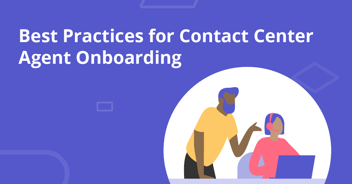Scenario-Based Learning: What It Is, and Why It Works

Thinking back, you can probably remember taking a course where instructors spoon-fed students a list of facts. Or, it was a handful of rules, such as dos and don’ts. These bits of information lay flat in our brains if we even manage to recall them at all.
Knowledge leaders commonly abide by the 70-20-10 rule. That is, experiential knowledge comprises 70% of what employees absorb, followed by 20% from interactions with others. That leaves formal education as the source of just 10% of what employees know or retain.
By incorporating real-life experiences into on-the-job learning, companies leverage those percentages as employees practice their newfound skills with allowances for errors and do-overs. Scenario-based learning takes employee education from one-dimensional learning to 3D, rendering the employee handbook so last century.
A brief history of scenario-based learning
In 1991, theorists Lave and Wenger created the term Situated Learning, another term for scenario-based learning. They found that it’s more effective to teach information in the context in which it’s used. For on-the-job learning, creating scenes in which employees apply learned behaviors and principals, is stickier. Employees realize higher knowledge retention. What do you remember more easily: a static list of best practices or a time when you used those tools in a real-life setting?
What is scenario-based learning?
Scenario-based learning is an Instructional Design approach using real-life situations that employees might encounter on the job, yielding high-quality results.
The objective is for learners to meet realistic work challenges head on and get realistic feedback as they progress. The simulation walks them through different choices they can make, which leads to different outcomes. Employees use critical thinking skills to choose responses, solve problems and deliver great customer service experiences. Everything that happens in the training room reflects actual scenarios and prepares the learner for real life situations.
The most successful training programs focus 70% of their training around experiential learning because it significantly improves retention and employee performance.
What are the principles of scenario-based training?
It’s participatory instead of merely observational. Traditional learning methods include passively sitting through a lecture or presentation. Or clicking through a series of text-heavy slides in an E-Learning course. Or worse, paging through a paper binder that may or may not contain the latest information.
In scenario-based training, it’s up to the learner to solve a problem or troubleshoot a challenge. They’re presented with a simulated situation and offered different choices to make. The employee jumps in and gets their hands dirty by choosing the response and therefore the direction of the outcome. Learning by doing creates a familiarity with situations that an employee simply can’t get from reading a manual. If they get it wrong, they can try repeatedly, if needed.
Scenario-based learning creates a level playing field for staff, as everyone will need to reach an equal competence before completion. It’s also fast, so when things in an organization change, as they so often do, this process makes it simpler to get fresh information to employees quickly.
How is scenario-based learning used in online training?
This is where it gets creative. Scenario-based learning online can take endless forms. It can unfold in a story-telling process or integrate as part of an overall theme. It can incorporate simple images, animation, or live-action scenes on video. Adding gamification contributes to course engagement and gives the “player” a sense of achievement and ownership of the outcome.
For remote workers, scenario-based learning is essential for keeping up with new processes. An on-site manager is not available to someone working from home. Running through real-life scenarios gives the employee a type of muscle memory for when that scene replays itself on the job. It is theory put into practice. Employees grasp concepts easier when they’re executing them and recall them quickly when needed.

What are the benefits of scenario-based learning?
Increases Learner Engagement
One of the most valuable benefits is the ability to engage learners by stimulating their brain activity. This form of learning encourages learners to think critically allowing them to solve problems and make decisions based on what they have learned. Storytelling simulations are a great way to promote engagement as they stimulate a learner's emotions. If employees are invested in the story told by the simulation, they are less likely to become distracted.
Increases Knowledge Retention
Simulations increase knowledge retention in many ways. The use of storytelling makes the content easier to understand and remember. Today's learners demand engaging content and absorb information in small amounts at a time. Simulations should be broken down into short, simple modules that focus on one specific topic at a time, much like the way we look up short videos or articles online. Learners also practice what they learn during simulations. The combination of storytelling and practice increases knowledge retention because people learn the most through their experiences.
Speeds Up Time To Proficiency
Another advantage is that employees can learn new skills faster. Simulations can be completed alone and can be worked through in minutes. This makes the process much faster than real-time interactions with customers. Simulations speed up the time to competency by allowing employees to practice their skills in a quick and efficient way.
Improves Knowledge Application
Employees who practice what they learn in simulations are more likely to apply that knowledge in real life than with other forms of training. It allows employees to practice a new skill in a risk-free environment helping them build confidence before interacting with customers. Simulations provide examples, show employees how the information they are learning is useful and how they can apply it on the job.
Allows Employees to Fail & Learn
Simulations are mostly conducted in an online environment, making them risk-free. This takes quite a bit of pressure off the learner. If they do not get a particular question or scenario just right, they can go back and see what they can do differently next time. Enabling employees to learn and grow in this manner is both engaging and effective. They will learn more than just the right answers, they will understand why that answer is the best option.
Builds Employee Confidence
Often, customer representatives work with customers who are frustrated because of an issue they are experiencing. This can be intimidating without the right experience. Simulations provide employees with the experience they need to build confidence and give options they can choose when handling specific scenarios. Employees are able to make choices they think will work best without consequences. This will help prepare them to work with customers to better meet their needs.
Shows Employees How Offerings Fill Customer Needs
With specific topics like product knowledge, it is easier to show employees what they need to know rather than verbally telling them. Simulations provide product knowledge information with context, which is a huge advantage. This helps them to understand more than just facts. They will learn about customer needs and how your organization's offerings fulfill them. This level of understanding is essential to providing excellent customer service.
Improves ROI
Simulations help employees learn faster, retain what they learn, and practice those skills in real life, which significantly increases your training ROI. Employees who practice the necessary social skills to handle customers before working with them in real life build both their skills and confidence. This improves customer satisfaction and boosts profit.
Facilitates Cross-Functional Performance
While going through scenario-based learning, customer service teams will better understand the importance of working cross-functionally. For situations when customer queries cannot be solved at the first step, first level teams must be able to explain the criticality of the issue to the second level teams. This ensures building communication skills and team-building among members to enhance their customer service skills.
7 tips for writing an effective scenario
- Understand the Learners:
To write concrete and effective scenarios you must understand your learners and know their needs and expectations. Understand the skills that they already possess, the extent of challenge that can be given to them, and the outcome that they want to attain to determine how the scenario should be framed and presented. Not understanding the learner might result in a scenario too boring or too complex to achieve the desired results.
- Create Real Life and Relevant Situations:
Make your scenarios as real as possible. A scenario is essentially a story with characters and situations, usually accompanied by questions that challenge the learner to respond. Unless the learner finds these situations believable and relevant, they will not relate to them. Only a realistic situation can engage the learner and help them retain useful information, so make your fictional scenarios as real and relevant as possible.
- Motivate the Learner:
A well-written scenario should motivate the learner to action. As previously mentioned, a scenario usually poses problem situations for learners to respond to and they are expected to do so by recalling their previous knowledge. Thus, an effective scenario motivates the learners to believe that they have the necessary skills to overcome any problem situation they encounter.
- Challenge the Learners:
A scenario will only work and help learners retain information when it challenges them. Only when the learner faces some sort of challenging situation and has to think of a solution will the scenario be effective. The best way to write concrete scenarios is to present a problem situation, provide some clues for the learners to identify, and then provide the answer. However, keep in mind the challenge should not overwhelm the learners to the extent that they abstain from putting any effort to find the solution.
- Use Informal and Conversational Language:
It is generally a good idea to use conversational and informal language while writing scenarios. Learners can easily relate to the conversational style and find it easier to engage with the content. It also makes the scenario interesting and informal, so learning happens in a comfortable way.
- Use Interesting Interactivities:
Another useful tip to make the scenarios interesting and effective is to use as many interactivities as possible. The most common form of interactivity in this case will be questions and answers. However, other interactivities, if relevant to the content, can be used to increase the overall engagement of the learners.
- Use Visuals:
Finally, a scenario becomes much more effective when it is presented with visuals. Scenarios are after all stories and stories are best presented through visual images. Characters, backgrounds, callouts, labels, and other graphics make it engaging and interesting for the learners. They can also retain information if they have visual memory of the content.
The bottom line on scenario-based learning
Whether your company wants to trade up from regular eLearning, or take a leap from paper trails and emails, scenario-based learning will expedite the onboarding process, reduce downtime, and put all employees on the same page.
To summarize, there are many benefits of scenario-based learning:
- helps learners learn through relatable situations
- improves the forgetting curve by creating sticky learning experiences
- helps them validate their learning
- allows them to practice in a safe environment
- stores everything in one place for quick reference after the training is complete
- visually walks a learner through each step of each scenario allowing them to see where they are, at any time, in the discussion with the customer
- allows the learners to make mistakes, and find their way back to the right spot
- provides the ability for the teacher to update the scenario and publish to all of the learners at the same time should the need arise
- improved ROI - our customers have improved their training time by 75% and we can prove it; that directly translates to cost savings when you can get your employees out of the classroom and into their jobs faster
Visit our features page to learn more about how scenario-based learning as part of a knowledge management tool can have a massive impact on the success of your team.


